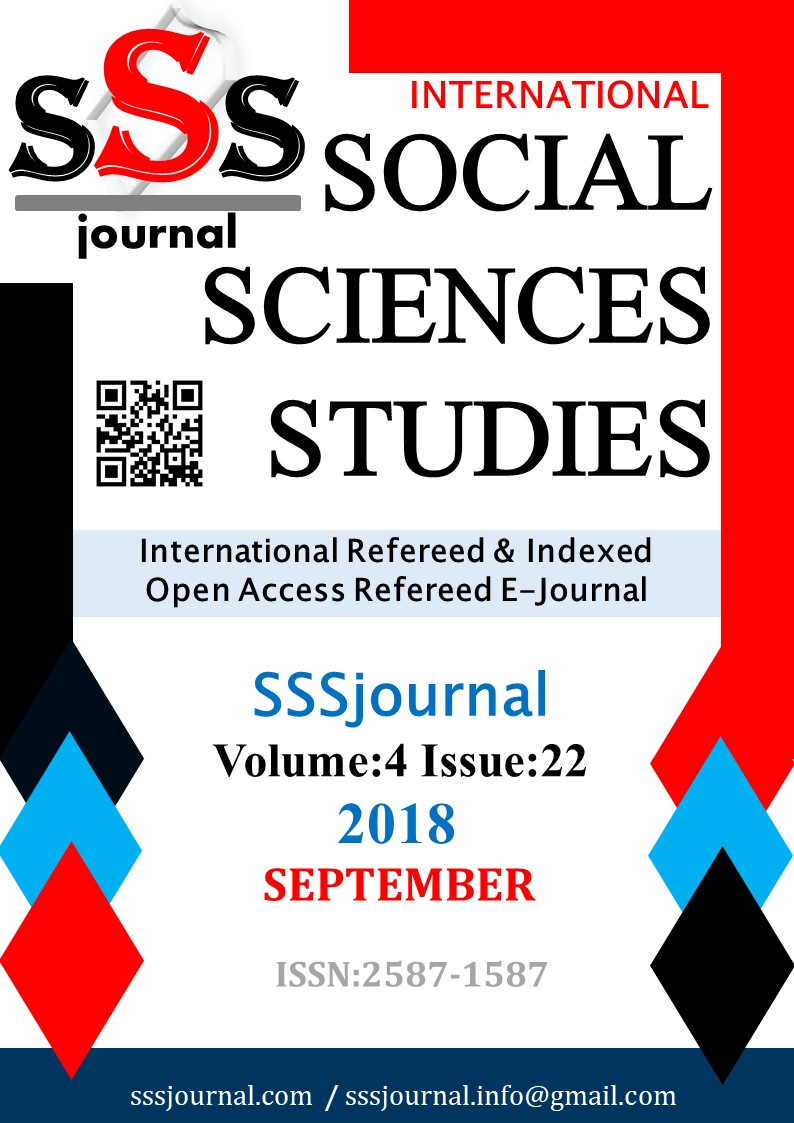Author :
Abstract
Bu çalışma, mahremiyet olgusunun sanat nesnesi haline gelme nedenlerini anlatmayı amaçlamaktadır. Bu amaçla, mahremiyet kavramı farklı yönleriyle incelenmiş, mahremiyet olgusunun birey ve öteki arasındaki konumu araştırılmıştır. Bireyin mahremiyeti, öteki için bilinmeyen bir bölgededir; dolayısıyla mahremiyet, birey ve öteki arasında ayırıcı bir unsurdur. Toplumsal yaşamda en katı haliyle hissedilen bireyler-arası mahrem sınırın sanat alanında değişime uğradığı düşüncesinden hareketle, çağdaş sanat pratikleri bu çerçeveden ele alınmıştır. “Ben nedir?”, sorusuna benlik, var oluş ve mahremiyet kavramları üzerinden cevaplar aranmış, “ben”in yaratımında “öteki”nin konumu araştırılmıştır. Dış dünyanın birey üzerindeki etkisi ve buna bağlı olarak bireyin öne çıkan mahremiyet ihtiyacı detaylandırılmıştır. Sanatçının kendi imgesini sanat nesnesine dönüştürme nedenleri mahremiyet kavramı ile ilişkilendirilerek sanat yapıtları üzerinden incelenmiştir. Bu bağlamda, kendi mahremiyetini deşifre eden ya da ötekinin mahremiyetini gözler önüne seren yapıt örnekleri verilmiştir. Elde edilen bulgular kapsamında sanat üretimi, birey ve öteki arasındaki iletişimde süregelen “görülemez-bilinemez” olan mahrem sınırın esnekliğine olanak sağlayan bir alan olarak değerlendirilmiştir.
Keywords
Abstract
This study seeks to elucidate the reasons why the issue of privacy becomes an object of artistic endeavor. For this purpose, the concept of privacy is considered from various aspects and the position of privacy vis-à-vis the Individual (the Self) and the Other is investigated. For the Other, the Individual’s privacy is an unknown domain and thus privacy is a divisive issue between the Individual and the Other. The notion that interpersonal privacy boundaries are sensed the most emphatically in social life and that they undergo a transformation in the domain of art provides the framework for a consideration of contemporary artistic praxes. Answers are sought to the question of “What am I?” in terms of the concepts of “existence” and “privacy” while the position of “the Other” in the creation of “the Self” is investigated. The impact of the external world on the individual and the associated emergent need of the individual for privacy are detailed. The reasons why artists make their own image a subject of art are examined by looking at works of art in the context of privacy. Examples are provided of works in which artists decrypt their own privacy or expose the privacy of the Other. Based on the findings of this examination, the conclusion is reached that artistic production is a domain that imparts flexibility to the perpetually “invisible/unknowable” boundary of privacy in communication between the Individual and the Other.
Keywords
- Abramovic, M. & Kaplan, J. (2016). Walk Through Walls A Memoir, Crown Publishing Group, New York
- Abramovic, M. & Kaplan, J. (2016). Walk Through Walls A Memoir, Crown Publishing Group, New York Bauman, Z. (2015). Bireyselleşmiş Toplum (çev: Yavuz Alagon), Ayrıntı Yayınları, İstanbul.
- Bauman, Z. (2016). Postmodern Etik (çev: Alev Türkeri), Ayrıntı Yayınları, İstanbul.
- Benjamin, W. (2015). Teknik Olarak Yeniden-Üretilebilirlik Çağında Sanat Yapıtı (çev: Gökhan Sarı) Zeplin Kitap, İstanbul.
- Brooks, P. (1985) Reading fort the plot: Design and intention in narrative, New York: Vintage,
- Colomina, B. (2017). Mahremiyet ve Kamusallık (çev: Aziz Ufuk Kılıç), İletişim Yayınları, İstanbul.
- De Saussure, F. (1972; 1997). Cours de linguistique générale. Edition critique, ed. & comm. Tullio de Mauro, Paris.
- Gasset, O.Y. (2014). İnsan ve “Herkes” (çev: Neyire Gül Işık), Metis Yayınları, İstanbul.
- Gasset, O.Y. (2015). Tarihsel Bunalım ve İnsan (çev: Neyire Gül Işık), Metis Yayınları, İstanbul. Hançerlioğlu, O. (1967). Felsefe Sözlüğü, Varlık Yayınları sayı:1290, İstanbul.
- Kahraman, H.B. (2010). Cinsellik, Görsellik, Pornografi, Agora Kitaplığı, İstanbul.
- Kuspit, D. (2010). Sanatın Sonu (çev: Yasemin Tezgiden), Metis Yayınları, İstanbul. Laing, R.D. (1967) The politics of experience, New York: Ballantine.
- Maslow, A. (2017). İnsan Olmanın Psikolojisi (çev: Okhan Gündüz), Kuraldışı Yayıncılık, İstanbul.
- Mumford, L. (2013). Tarih Boyunca Kent (çev: Gürol Koca&Tamer Tosun), Ayrıntı Yayınları, İstanbul. Pallasmaa, J. (2011). Tenin Gözleri (çev: Aziz Ufuk Kılıç), Yem Yayın, İstanbul.
- Randall, W.L., (2014). Bizi “Biz” Yapan Hikayeler (çev: Şen Süer Kaya), Ayrıntı Yayınları, İstanbul. Sartre, J.P. (1990). Varoluşçuluk (Existentialisme) (çev: Asım Bezirci), Say Yayınları, İstanbul.
- Sayın, Z. (2015). İmgenin Pornografisi, Metis Yayınları, İstanbul.
- Sontag, S. (2011). Fotoğraf Üzerine (çev: Osman Akınhay), Agora Kitaplığı, İstanbul.
- Spence, J. (1988) Putting Myself In The Picture: A Political, Personal and Photographic Autobiography, WA: The Real Comet Press, Seattle.
- Williams, R. (2016). Anahtar Sözcükler (çev: Savaş Kılıç), İletişim Yayınları, İstanbul





